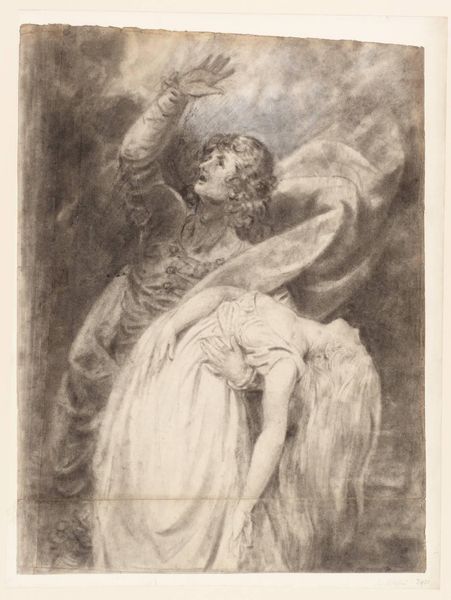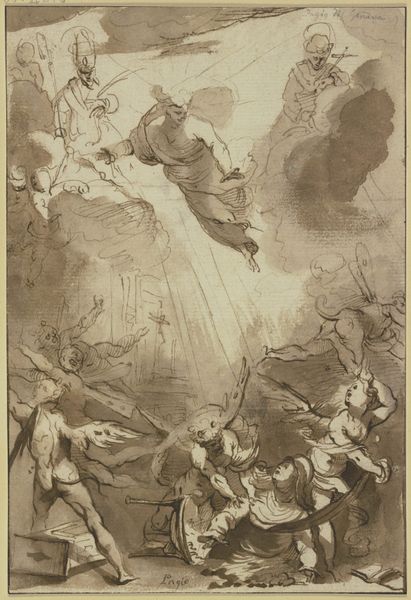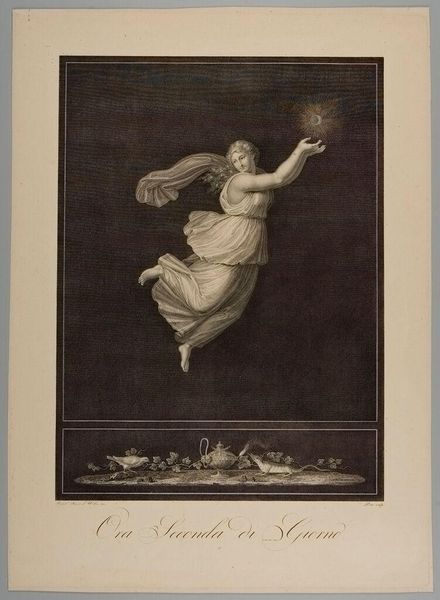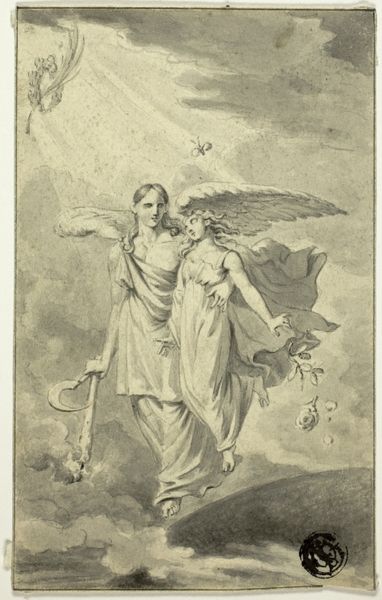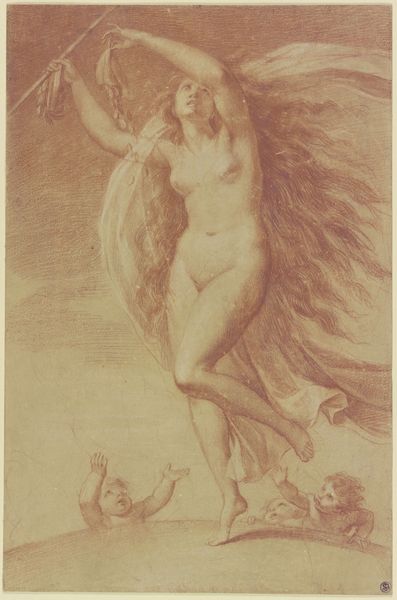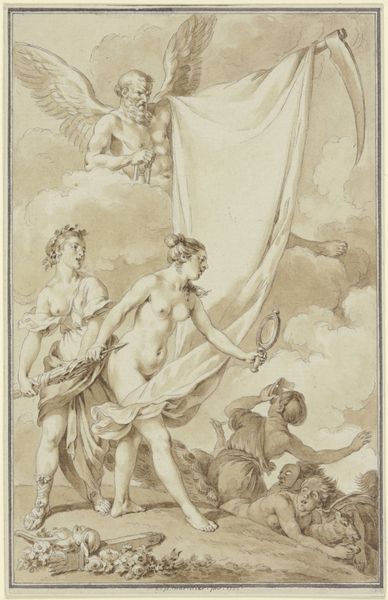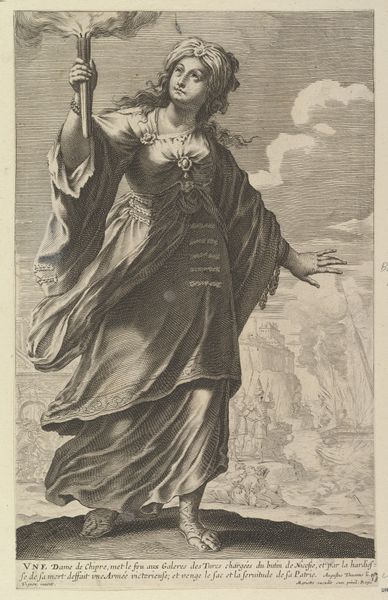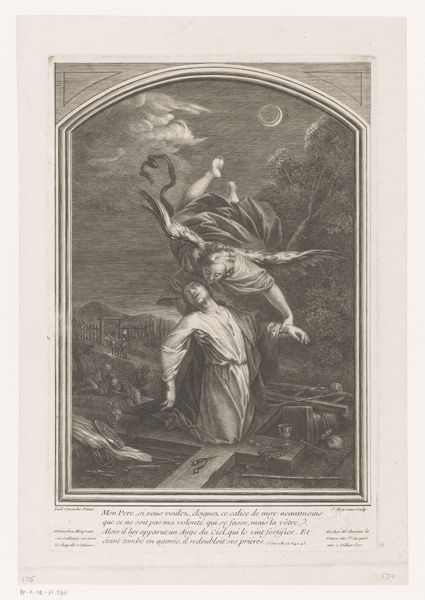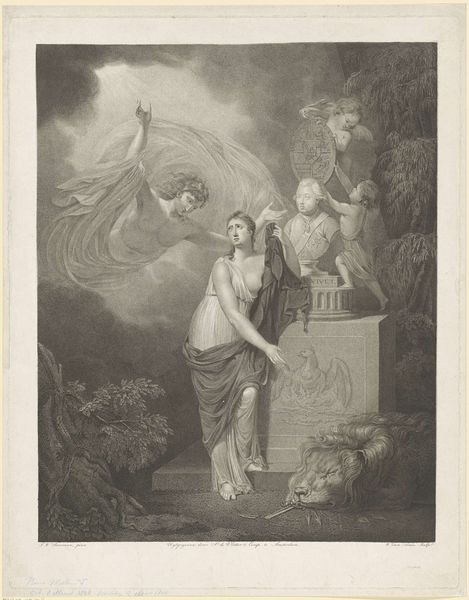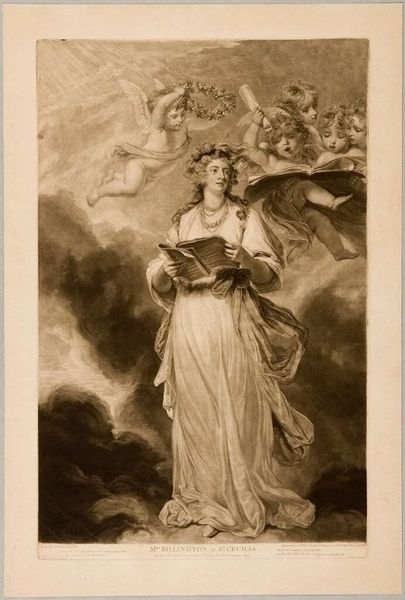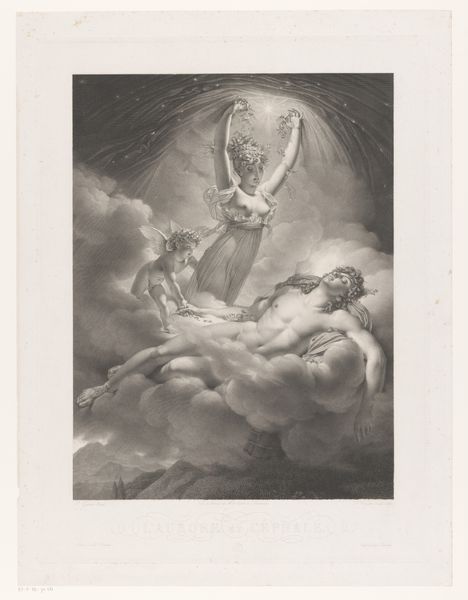
drawing, pencil
#
drawing
#
neoclacissism
#
allegory
#
landscape
#
etching
#
charcoal drawing
#
figuration
#
pencil drawing
#
pencil
#
history-painting
Dimensions: height 515 mm, width 401 mm
Copyright: Rijks Museum: Open Domain
Curator: This is Jacques Kuyper's "Allegorie op de Vrede van Amiens 1802," rendered in pencil and etching. What are your initial impressions? Editor: Well, it feels... ethereal. A bit faded, like a memory. All that grey swirling around the central figure gives her a dreamy quality, doesn't it? She almost floats right out of the drawing. Curator: Indeed. Kuyper utilizes the landscape tradition here, layering it with figuration and allegory to create a meditation on a specific historical moment, the Peace of Amiens. We observe a triumphal figure bestowing a laurel, set against what seems to be the resumption of everyday life in the city behind her. Editor: Right, you've got this idealized figure up top, all flowing drapery, but then the folks down below are just…milling about. The contrast between the classical allegory and the somewhat messy, very human scene in the foreground is what gets me. It’s like peace is this lofty idea that has to filter down into the mundane. Curator: Precisely. Consider also the stylistic nod to neoclassicism; observe the figure's idealized form, echoing a kind of restrained idealism. That stylistic reference reinforces the aspirational, ordered society that the Peace promised. Note also the artist's effective modulation between pencil shading, suggesting atmospheric depth, and clean, incisive etched lines to sharpen key allegorical figures, particularly in the group on the bottom-right. Editor: Yes, and she almost blends back into the sky because the pencilwork creates these cloudlike sweeps. There's a somberness that seems to question if that idyllic, peaceful life ever arrived for those crowds celebrating below. It’s like he's saying, "Well, we can hope, can't we?" with just a hint of skepticism. Curator: One might infer such a reading. This composition uses historical painting strategies and symbolism to portray a particularly complicated era of hopeful pause. The composition asks: What kind of future will emerge now? Editor: It’s beautiful how he used such delicate techniques to explore such monumental themes, the sort that really makes you ponder how history remembers its own promises. Thanks to him we can see both the hope and hesitation. Curator: Yes, a moment suspended in the very materiality of the work.
Comments
No comments
Be the first to comment and join the conversation on the ultimate creative platform.
